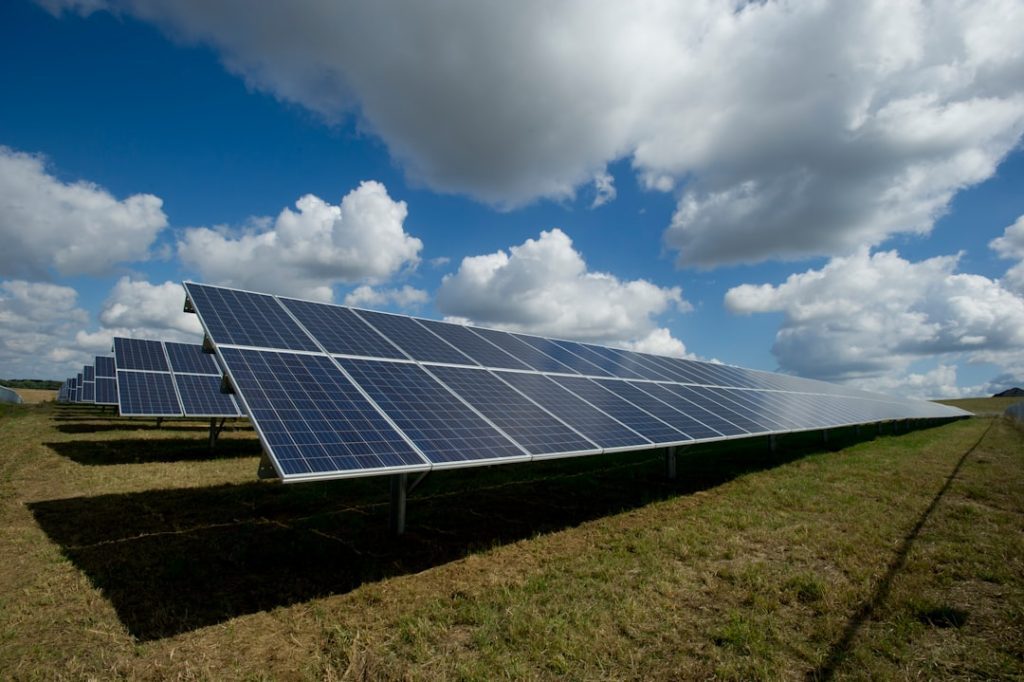Afghanistan, a country known for its rugged terrain and challenging geopolitical landscape, is also a land of immense renewable energy potential. With abundant sunlight, strong winds, and flowing rivers, Afghanistan has the natural resources to harness renewable energy and reduce its dependence on fossil fuels. The country’s renewable energy sector has been gaining momentum in recent years, with a growing focus on solar, wind, and hydroelectric power. As Afghanistan seeks to modernize its energy infrastructure and improve access to electricity for its citizens, renewable energy has emerged as a key component of the country’s energy strategy.
Renewable energy in Afghanistan is not only an opportunity to reduce greenhouse gas emissions and combat climate change, but also a means to improve energy security and create economic opportunities. The country’s reliance on imported fossil fuels has made it vulnerable to supply disruptions and price fluctuations, highlighting the need for diversification in the energy sector. By investing in renewable energy, Afghanistan can reduce its reliance on imported fuels and strengthen its energy independence. Additionally, the development of renewable energy projects can create jobs, stimulate economic growth, and provide access to electricity in remote and underserved areas. As Afghanistan looks to build a more sustainable and resilient energy system, renewable energy is poised to play a crucial role in the country’s future development.
Current Challenges and Opportunities in the Renewable Energy Market
Despite its vast renewable energy potential, Afghanistan faces several challenges in developing its renewable energy market. One of the primary obstacles is the lack of investment and financing for renewable energy projects. The high upfront costs of infrastructure development and the perceived risks associated with investing in Afghanistan have deterred potential investors from entering the market. Additionally, the country’s limited institutional capacity and regulatory framework for renewable energy have hindered the sector’s growth. Without clear policies and regulations to support renewable energy development, investors and developers face uncertainty and barriers to entry.
However, amidst these challenges, there are also significant opportunities for the growth of renewable energy in Afghanistan. The increasing demand for electricity, particularly in rural areas, presents a compelling market opportunity for renewable energy developers. With approximately 70% of the population lacking access to electricity, there is a pressing need to expand the country’s energy infrastructure and provide reliable power sources. Renewable energy projects can help bridge this gap by delivering clean and affordable electricity to off-grid communities. Furthermore, the declining costs of renewable energy technologies, such as solar panels and wind turbines, make these solutions increasingly competitive with traditional fossil fuels. As the global trend towards renewable energy continues to gain momentum, Afghanistan has the opportunity to leverage these technologies to meet its energy needs in a sustainable and cost-effective manner.
Government Policies and Incentives for Renewable Energy
Recognizing the importance of renewable energy for its energy security and economic development, the Afghan government has taken steps to promote the growth of the renewable energy sector. In 2017, the government adopted the National Renewable Energy Policy (NREP), which outlines the country’s vision for increasing the share of renewable energy in its energy mix. The policy sets ambitious targets for renewable energy deployment, aiming to achieve 10% renewable energy penetration by 2020 and 40% by 2032. To support these targets, the government has introduced a range of incentives and support mechanisms for renewable energy projects.
One of the key incentives for renewable energy in Afghanistan is the feed-in tariff (FiT) program, which guarantees long-term contracts and fixed prices for electricity generated from renewable sources. This program provides financial stability and predictability for renewable energy developers, making investments in clean energy more attractive. Additionally, the government has established a Renewable Energy Fund to provide grants and concessional loans for renewable energy projects, helping to offset some of the upfront costs and risks associated with project development. Furthermore, the government has streamlined the permitting and licensing process for renewable energy projects, aiming to reduce bureaucratic hurdles and facilitate project implementation. These policy measures demonstrate the government’s commitment to creating an enabling environment for renewable energy investment and deployment in Afghanistan.
Market Strategies for Promoting Renewable Energy Adoption
| Market Strategies | Metrics |
|---|---|
| Feed-in Tariffs | Number of renewable energy installations |
| Net Metering | Percentage of energy generated from renewable sources |
| Tax Incentives | Investment in renewable energy projects |
| Renewable Portfolio Standards | Percentage of energy mix from renewable sources |
In order to promote the adoption of renewable energy in Afghanistan, market strategies are essential to raise awareness, build capacity, and create demand for clean energy solutions. One effective strategy is to engage with local communities and stakeholders to educate them about the benefits of renewable energy and demonstrate how these technologies can improve their quality of life. By organizing workshops, training programs, and public outreach campaigns, renewable energy advocates can empower communities to embrace clean energy alternatives and advocate for their adoption.
Another important market strategy is to build partnerships between government agencies, private sector companies, and international organizations to leverage their expertise, resources, and networks. Collaborative efforts can help address some of the key barriers to renewable energy deployment, such as financing, technical capacity, and policy support. By working together, stakeholders can pool their resources and knowledge to develop innovative business models, financing mechanisms, and policy frameworks that support the growth of the renewable energy market in Afghanistan.
Furthermore, creating market incentives such as tax credits, subsidies, and preferential tariffs can stimulate investment in renewable energy projects and drive market demand. These incentives can help offset the higher initial costs of renewable energy technologies and make them more competitive with conventional fossil fuels. By aligning financial incentives with environmental and social goals, policymakers can encourage businesses and consumers to prioritize clean energy solutions and accelerate the transition towards a sustainable energy future.
Case Studies of Successful Renewable Energy Projects in Afghanistan
Several successful renewable energy projects in Afghanistan serve as inspiring examples of how clean energy solutions can address the country’s energy challenges and create positive impacts for local communities. One notable case is the Kandahar Solar Power Plant, which was completed in 2018 with support from the Asian Development Bank (ADB). The 10-megawatt solar plant provides clean electricity to over 30,000 households in Kandahar province, reducing reliance on diesel generators and improving access to reliable power. The project not only demonstrates the technical feasibility of solar power in Afghanistan but also showcases how renewable energy can enhance energy security and stimulate economic development in conflict-affected regions.
Another successful example is the Badakhshan Renewable Energy Project, implemented by the Aga Khan Development Network (AKDN) in partnership with the Government of Afghanistan. This project aims to provide off-grid communities in Badakhshan province with access to clean electricity through small-scale hydroelectric power plants. By harnessing the power of local rivers, these mini-grids have brought electricity to remote villages that were previously without power, improving living standards and creating new opportunities for education, healthcare, and economic activities. The project highlights how decentralized renewable energy solutions can empower marginalized communities and contribute to sustainable development goals.
These case studies demonstrate that renewable energy projects can deliver tangible benefits for Afghanistan by expanding access to electricity, reducing reliance on fossil fuels, creating jobs, and improving livelihoods. By showcasing successful examples of clean energy deployment, these projects inspire confidence in the potential of renewable energy to transform the country’s energy landscape and contribute to its long-term development.
The Role of International Organizations in Advancing Renewable Energy

International organizations play a crucial role in advancing renewable energy in Afghanistan by providing technical assistance, financial support, capacity building, and policy guidance. Organizations such as the World Bank, ADB, United Nations Development Programme (UNDP), and AKDN have been actively involved in supporting renewable energy projects across the country. These organizations bring expertise in project development, financing mechanisms, technology transfer, and policy advocacy that are essential for overcoming barriers to clean energy deployment.
One key contribution of international organizations is their role in mobilizing financial resources for renewable energy projects in Afghanistan. Through grants, concessional loans, and risk mitigation instruments, these organizations help bridge the financing gap for clean energy investments and make projects more bankable for private sector investors. Additionally, international organizations provide technical assistance to strengthen institutional capacity within government agencies and regulatory bodies responsible for overseeing renewable energy development. By sharing best practices and knowledge from global experiences, these organizations help build local expertise and ensure that renewable energy projects are developed and operated according to international standards.
Furthermore, international organizations support policy dialogue and advocacy efforts to promote an enabling environment for renewable energy investment in Afghanistan. By engaging with government officials, industry stakeholders, and civil society groups, these organizations help shape policies that incentivize clean energy deployment, streamline regulatory processes, and create market opportunities for renewable energy developers. Through their collaborative efforts with national partners, international organizations contribute to building a sustainable ecosystem for renewable energy development in Afghanistan.
Future Outlook for Renewable Energy in Afghanistan
Looking ahead, the future outlook for renewable energy in Afghanistan is promising as the country continues to prioritize clean energy as a key component of its long-term development strategy. With ambitious targets set out in the National Renewable Energy Policy (NREP), Afghanistan aims to significantly increase its share of renewable energy in the national energy mix over the coming decades. This presents opportunities for domestic and international investors to participate in the growth of the renewable energy market and contribute to building a more sustainable and resilient energy system.
As technology continues to advance and costs decline, renewable energy solutions such as solar photovoltaic systems, wind turbines, and small-scale hydroelectric plants are becoming increasingly accessible and affordable for deployment across Afghanistan. These technologies offer scalable solutions that can be tailored to meet diverse energy needs in urban centers as well as remote rural areas. By leveraging these technologies alongside innovative financing models and supportive policies, Afghanistan has the potential to unlock its vast renewable energy potential and transform its energy landscape.
Furthermore, as global momentum towards combating climate change grows stronger, there is increasing recognition of the role that renewable energy can play in reducing greenhouse gas emissions and mitigating environmental impacts. By aligning its renewable energy development with international climate goals and sustainability objectives, Afghanistan can position itself as a responsible global citizen while reaping the economic benefits of transitioning towards a low-carbon economy.
In conclusion, renewable energy holds great promise for Afghanistan as it seeks to address its energy challenges while promoting economic growth and environmental sustainability. With supportive government policies, market strategies that drive adoption of clean energy solutions, successful case studies demonstrating tangible benefits, active engagement from international organizations, and a positive future outlook driven by technological advancements and global trends towards sustainability – Afghanistan is well-positioned to embrace renewable energy as a cornerstone of its future development.
One related article to Renewable energy market strategies in Afghanistan is about the thriving briquette manufacturing industry in the country. The article discusses how this sustainable energy source is gaining popularity and contributing to the renewable energy market in Afghanistan. It also highlights the efforts of local businesses and organizations in promoting and supporting this eco-friendly alternative. To learn more about this topic, you can read the full article here.



